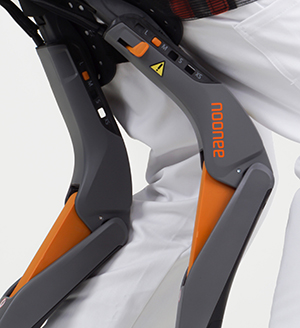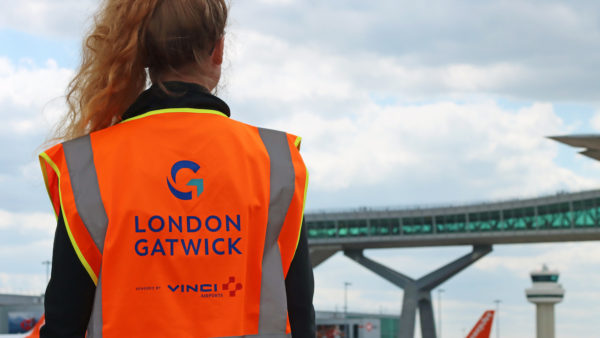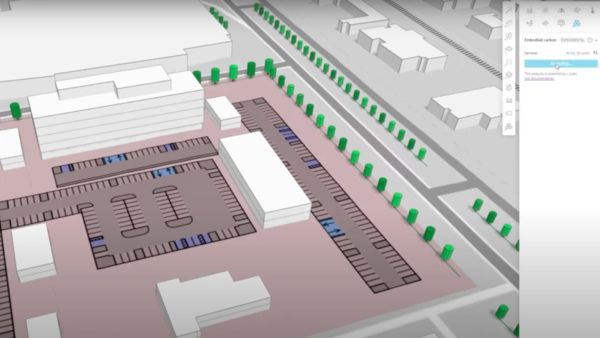Marc Sapetti, designer of the “chairless chair”, tells Stephen Cousins how passive exoskeletons designed for use in the automotive industry could eventually reach construction.
What is the “chairless chair”?
A wearable passive exoskeleton, attached to the back of the legs, that enables users to walk around freely, then quickly move into a supported squat, crouch, or seated position as required.
The device is made from lightweight and durable engineering plastics, such as polyamide, and was developed in collaboration with product manufacturer Noonee for use by factory workers at automotive firms who are required to carry out repetitive tasks, such as the assembly of small parts into a car chassis.
Who is currently using it?
It is being used by workers at car makers including Audi, BMW and Renault to help prevent accidents and muscle strain. Chairless chairs are working almost 24 hours a day, each one is shared by four or five workers doing four-hour shifts.
Why was the product developed?
The biggest problem it aims to solve is the fact that chairs are not allowed on car assembly lines because they are considered a dangerous trip hazard.
In addition, assembly workers are on their feet all the time and must frequently move into awkward positions, to crouch or reach low down, which can cause a lot of muscle strain.
The seat incorporates a suspension mechanism that forces hips into an inward-facing cambered position to force the spine into the correct ergonomic posture to reduce muscle stresses.
How much is muscle strain reduced?
The effects are currently being tested, at companies like Toyota, to get accurate data on the amount strain in muscles is reduced and to document the overall benefits of the product. So far there has been a lot of analysis on the key pressure points.

Are there plans to develop a version for construction?
Noonee will be covering more and more markets and hopefully will reach the construction segment. However, taking it outside the factory environment is going to require a bit of a fight. The automotive industry has very precise regulations and the product has been certified for these environments – the legislation gets a lot more complex when you look at other uses.
For example, I have received lots emails from people with disabilities or knee problems who would really like to buy one to enable them to more easily access public places. But selling it as a medical device raises issues, if someone had a drop in blood pressure and became dizzy when wearing the device, they could fall backwards, which would be very dangerous.
It makes people look like RoboCop, was that the intention?
We’ve had people say that. The device starts out looking very unfamiliar, then users come to see it is a positive thing to help improve their performance, at which point it becomes more accepted in the workplace.
Some people have referred to it as an exoskeleton, but that is technically incorrect, the chairless chair does not make people stronger by providing additional power, it simply reduces tiredness. We prefer to call it a wearable ergonomic device or a passive exoskeleton.
Is it easy to lose your balance?
Not really, the only thing you can’t do is lean backwards, all the rest comes very naturally, finding a comfortable posture is very easy. However, it is not possible to walk up or down stairs or run when wearing the chairless chair.
Before any devices are sold, Noonee carries out a an evaluation of the specific workspace and tasks being carried out to see what the device would be most suitable for. When a purchase is made, training sessions are carried out to ensure it is used correctly and people understand balance and how to adjust the seat.

The effects are currently being tested, at companies like Toyota, to get accurate data on the amount strain in muscles is reduced and to document the overall benefits of the product. So far there has been a lot of analysis on the key pressure points.– Marc Sapetti















